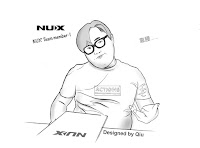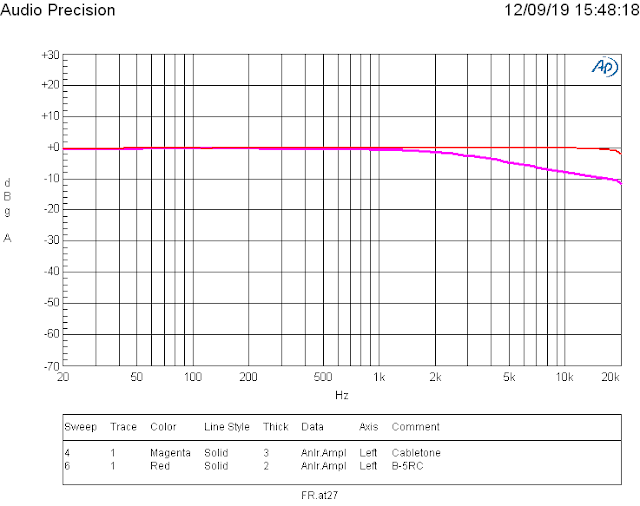Blog Contribution: Monk Li ( Taiwan ) Marketing Director NUX | Cherub Technology.
As a modern musician, we have to know wireless more. So let's talk some basic knowledge about 2.4GHz and wireless.
Wireless is becoming more and more popular for musical instruments, but we have to know wireless is divided into UHF and 2.4GHz.
First let's talk about UHF-Ultra High Frequency. In fact, 2.4G is also included in this frequency band. But 2.4G we mean ISM, which is the universal channel. At present, 2.4G is a universal channel that is open all over the world, and UHF must apply for a license according to the frequencies opened by governments of all countries.
This is why major brands have begun to move to 2.4GHz.
The most difficult point for 2.4G to overcome is how to avoid the interference of the WiFi router, overcome latency issue, and transmission length.
The working principle of 2.4GHz.
2.4GHz is a general term, which is actually between 2.4GHz and 2.483GHz. (See Wikipedia)
Take Shure's 2.4GHz as an example:
Shure cut the 2.4GHz band into 19 bands (NUX B-5 also cut into 19 bands), avoiding the 3 bands with strong interference from WiFi devices and the 1 band used by the pairing code, so selected 15 bands for working.
Professional 2.4GHz private protocol bandwidth is usually 2MHz (worse digital compression probably use 4MHz bandwidth), plus 1 MHz of Ramp Up / Down, 4MHz bandwidth is required.
(83-8) / 4 = 19 frequency bands (both the first 4MHz and the last 4MHz must be discarded)
As for frequency band cutting and data packet size, there is a considerable relationship between bandwidth. It can be known from the above that the digital compression algorithms of Shure and NUX are quite powerful, and the data packet can be processed very small. The most difficult thing for wireless transmission of musical instruments is how to compress the data packets small enough to keep high-fidelity sound reproduction. This is also the biggest difference between this generation of NUX B-5RC and the previous generation NUX B-2, so it can effectively reduce the power at the transmitting end and solve the problem of high-frequency interference noise of active pickups.
The sharp-eyed friend may realize that when Shure is in Group1, the system latency is the shortest, which is about 4ms. But in other groups, the system delay came to 7.3ms.
Because Shure uses FPGA instead of DSP, the latency of the arithmetic unit will be shorter than that of NUX B-5 using DSP. (Shure can achieve 4ms in Group1, NUX B-5 < 5ms)
The method in Group1 is that each channel of the transmitter uses 6 frequencies for transmission at a time (actually only 3 frequencies work, for example, 2424 and adjacent 2425 actually only have one transmitting, and at the same time, transmitting and receiving will detect the current working environment evaluates whether automatic frequency hopping switching avoids interference.), And the receiver only needs to receive a data packet of one of the three frequencies. At this time, the receiver does not return a signal to the transmitter, so only once transmission can minimize the latency. However, since there is no Protected Access, Shure uses 6 frequencies at a time to take into consideration the frequency hopping during work to avoid signal drop. (The more transmission frequencies, the lower chance of signal dropping, and the fewer transmission frequencies, the higher chance of signal dropping.)
Note: NUX also adopts the method of 3 transmitting frequencies but does not have frequency hopping during work (mainly considering that B-5's compact size,
low power consumption and standby time), while the Boss WL series and Line6 G10 only use two frequencies to transmit, so it will be more susceptible to interference than the B-5. Therefore, the signal stability is Shure GLXD> NUX B-5> Boss WL / Line6 G10.
The method of Group2 is to transmit at three frequencies + the receiver notifies the transmitter to hop:
Because this method is to inform the transmitter whether to switch frequency hopping through the receiver, the system latency comes to 7.3ms.
But the advantage is that the probability of missing data packets is lower than that of Group1. So it is also the choice of the balance between latency and missing packets.
Group3's approach is to transmit at 2 frequencies + the receiver notifies the transmitter to hop:
For example, Group3 / Channel1 uses 2415, 2416, and 2443. In fact, only one of 2415 and 2416 transmitted, and 2443 is transmitted in sequence. At this time, the receiving end only needs to receive one data from them. If the current 2415 will drop the packet, the receiver will notify the transmitter to jump to frequency 2416 to work.
The biggest difference between Group3 and Group2 is to sacrifice the chance of dropping packets to meet the possibility of 8 groups of devices working at the same time.
The method of Group4 is similar to the Bluetooth communication protocol. It adopts the method of cyclic transmission. The advantage of this method is that the possibility of dropping packets is minimal, but the disadvantage is that the system latency is very long. And this makes it impossible to work with other equipment at the same time.
So Group 2, 3, 4 is the choice between "the quantity of simultaneous working groups" and "the probability of dropping packets."
Therefore, the 2.4GHz wireless system is a kind of trade-off between "signal strength", "transmission distance", "pickup noise interference", and "digital compression algorithm to reduce bandwidth" and "keeping high-fidelity sound quality".
The most difficult part is the "digital compression algorithm", because this product can be called a "professional product" only if it can effectively compress the packet and keep high-fidelity sound quality.
Supplementary note: The shortest latency of B-5 system can be 3.8ms ~ the longest is about 4.8ms:
B-5 uses 3 frequencies for transmission, and the 3 frequencies send out signals in sequence. If the receiver receives the first transmission, the system latency will be the shortest 3.8ms. If it is received on the second transmission, Arrived, it is about 4.3ms. If it was received on the third transmission, it would be 4.8ms long.
NUX B-5RC 2.4GHz Wireless System
B-5RC wireless system fits in perfectly with all types of electric guitar, acoustic-electric guitar, bass guitar, Ukulele. Enhanced by the latest wireless technology innovation and upgraded algorithm, B-5/B-5RC can now work well with instruments that equipped with active pickups.
Moreover, it comes with the ground-breaking auto-matching system which allows you to enjoy complete freedom without any setup. Enjoy, have fun & rock on.
No buzzing/humming with active pickups.
You’re looking at the most compact wireless system that works well with active pickups. No more buzzing, humming, high-pitched noise,this system only delivers crystal clear guitar tone audio @ 24-bit/44.1kHz with less than 5ms latency.
Auto-matching system: no setup required.
Forgot about the channel-matching thing, B-5/B-5RC can work straight out of the box. Just turn on both the transmitter and the receiver, plug them to your guitar and amp accordingly, and you’re good to go.
Stay charged, always!
System Latency <5 ms
Large Dynamic Range 112dB
For a consumer-grade wireless product, the dynamic range of 112dB is already considered to be excellent. The average digital effects are almost in the vicinity of the dynamic range of 110dB.
Note: The dynamic range of the entire Boss WL series is 110dB. The sampling rate of Line 6 is basically less than 44.1KHz, and the Xvive is about 105dB. Only the Shure GLX-D has reached a very high level of 120dB.
Ultra-low system noise
When using 1K frequency to test the system noise, the system noise of B-5 is about -130dB, which is about 3uV.
Note: Generally speaking, the system noise of excellent audio equipment is acceptable within -120dB. (Probably 10uV) And the white noise like a guitar amplifier is basically larger than the B-5.
Ultra-high system Headroom
B-5 can start to be distorted up to 2.2Vrms, which translates into a signal range of 2.2 x ± (√2) = ± 3.263 V
Note: The signal range of the passive guitar is about ± 1V
Active guitar signal range approx. ± 2V
Active bass signal range approx. ± 3V
So this is enough to prove that B-5RC is used for active circuits and active basses, and there is no problem! !!
Optional Cable Tone simulation
The B-5RC provides Cable Tone simulation of about 3 meters length. After turning on the power, as long as the receiver button is pressed briefly, the indicator light turns orange to represent Cable Tone.
The pink line is the frequency response curve of the Cable Tone, and the red line is the frequency response curve of the normal mode.
Compared to the Line6 G10 fixed type, which can't choose to engage or disengage the Cable Tone, and Boss also distinguishes between WL-20 and WL-20L models with or without Cable Tone, the NUX B-5RC is very friendly.
All types of guitar jack friendly
Comparison Chart
What's the difference between B-5 , B-2 and others?
NUX B5-RC works like a guitar cable but offers wireless freedom. Setting up the system is simple: choose your channel on the Transmitter & Receiver, and is ready to go.



















